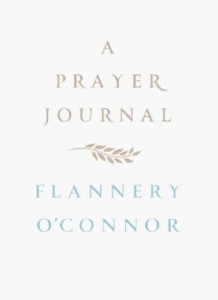21ST CENTURY HOLLYWOOD: REASONS FOR HOPE
I’m sitting in a lobby waiting for my ride to the airport. Might as well blog, right? It feels more redemptive than another losing round of Jedi Academy…
Here is a snip of the talk I will be giving in Spain on Thursday. They made me write it out for the translators in advance — so I actually know EXACTLY what I will be saying. I never generally read my talks, but rather work from an outline. Oratory is truly another whole art form — and it is a very different thing than reading out loud. For preachers who have ears to hear, let them hear…
Anyway, here’s some of the talk…
a) The Movies Search for Spirit
A big reason for hope in Hollywood is related to the search for the spiritual, which comes down to a rejection of the idea of a completely material universe. To borrow from The Wizard of Oz, in the Gen X and Gen Y artistic community, ‘Darwin is not just merely Dead, he is really quite sincerely dead.’ (Does that rhyme work in Spanish?)
A hundred years ago, the greatest American poet, Emily Dickinson, made a journey through doubt and materialism to come to the conviction, “This World is Not Conclusion.” She was talking about more than simply the notion of immortality. She meant that reality goes beyond the stuff we see, the material things that surround us. There is an artistic movement crowding in on Hollywood which is pushing this idea more and more. It is changing cinema, or in many ways, restoring cinema to its roots in the lyrical, poetic imagery of the Silent Screen.
I call this movement, The “Don’t Show How Things Look, Tell Us What They Mean” Movement. It is being driven very much by a young crop of directors who made their way into the business through the music video world. Music video is all about what things mean, as opposed to how they look. The best music video directors freely distort real colors, shapes, dimensions and points of view, in an effort to complement and interpret a song. Rejecting the demand for gritty “realism” (as though that were possible in a movie…) of the Baby Boomer filmmakers, these young filmmakers are pushing for a cinematic lyricism that could mirror and echo the emotional power of music. Films that reflect this movement include Donnie Darko, Levity, and TV shows like HBO’s Carnivale.
This new trend toward meanings as opposed to appearances is showing up particularly as regards the portrayal of human sexuality. In forty shameless years of the Sexual Revolution, cinema has shown us every possible permutation of two naked bodies writhing around. Suddenly now, many filmmakers consider it pedestrian to simply show what sex looks like. This is not because of any ethical-moral sense, but from we could call an artistic-moral sense which rejects the idea of being unoriginal or uncreative. “We’ve seen sex before. Don’t go there in the movie unless you are going to show us what sex means for the two characters.”
The films we are starting to see from this new generation tend to reject the suggestion that limitless sex leads to freedom or happiness. They tend to have a sadness about relationships that is appropriate considering what they have been through as the children of “sexually liberated” parents. My friend, screenwriter Craig Detweiler, calls these filmmakers “a generation in exile, singing sad songs of Jerusalem.” Films that exemplify this movement are Lost in Translation and Eternal Sunshine of the Spotless Mind.
This is a great opportunity for the Church. We are all about the sacramental sense in which everything we see points to a reality we can’t see. Frank Sheed said that, “The secular writer is confined to what he sees. The Christian writer speaks about what is really there.” It is for us to respond to this new generation of filmmakers yearning for meaning. We need our theologians and then educators to translate the Theology of the Body for the creative community, so they can bring it to their art, and then expand our understanding, in the way that Pope John Paul II has called art “a source of theology.”
3) “Beauty is not Pretty.”
My students are very concerned with creating movies that “tell the truth about sin.” Again, part of this is driven by the fact that their generation has been the victim of the lies of the Sexual Revolution, but for my students from Christian homes, this is actually a rejection of the artistic sensibilities of their religious parents.
Religious people have responded to the excesses of sex and violence in mainstream cinema, by clamoring for an art that is “non-offensive.” They want happy stories, with no challenging ideas and images that will be “safe.” Hence, Christian parents are embracing really bad movies – in terms of their lack of artistry – like Cheaper By The Dozen, Walk to Remember – which are, in fact, over-sentimentalized G-rated lies.
They reject movies like In The Bedroom, In America, the new remake of Peter Pan, and even Prince of Egypt, which they should actually embrace as well-crafted, PG and R-rated truths. Essentially, many good Christian people have convinced themselves that the arts are optional, and even dangerous. They certainly deny that the place of the arts in society is, as the Pope has said, “a prophetic role.” Prophets in the Biblical sense are supposed to shake people out of their complacency by reminding them who they are. We need our artists to help us see and hear. To make us feel. To break up our stony hearts and give us fleshy hearts.
The new generation of young Christians coming into Hollywood are all about telling hard truths honestly. The problem is, in their urgency to show sin as being very ugly, they run the risk of violating the audience. Again, as Emily Dickinson said, “Tell the Truth, but Tell it Slant, or All the World Be Blind.” We need to help these young filmmakers figure out how to dramatize hard truths in ways that will respect human freedom. We need to help the People of God reclaim a sense of their need for the arts, and to embrace and support our faith driven artists.
We can propose to even secular cinema a whole new understanding of beauty: why human beings respond to beauty, how it works on us, and most importantly what it is.
Hollywood understands beauty as being technical artistry. If all the parts are done well in an movie, and they all the parts are harmonized together that equals a great film for the business. We should suggest that it is absolutely true that these elements coming together produce a “great film”, but also that it can still be an ugly film. We need to make the case that beauty is more than the harmonious arrangement of parts. It has also to do with truthful content. What a movie communicates is as important as how it communicates. Films abound from mainstream Hollywood that fit the description of “well-crafted lie.” American Beauty, The Hours, and pretty much every episode of Friends, just to name a few.
In the same way, there can be films that have true content, but which because of their technical problems are also ugly. Films like this would be A Walk to Remember, Gods and Generals. After 8 years of working in Hollywood, I can not understate the importance of technical excellence in the art form – the mastery of craft – for Christians who want to work in mainstream cinema. Artistry and talent are not extras. They are the essential doorways in to influence in the popular culture.
4) The Power of The Passion
Undeniably, the release and astounding global success of Mel Gibson’s The Passion of the Christ has been the most significant event for the Church in Hollywood and in cinema probably ever. “The Movie” has everybody in the industry rethinking many long-standing assumptions about the global audience. It has many people in the Church rethinking their long-held assumptions about screen violence and the potential power for good of cinema. It is outside my scope to spend too much time here on this, but I do want to run down some of the ways the movie is opening doors in Hollywood and in the Church that could be very positive in the long term.
a) Serving the Audience of The Passion
Three days before The Passion opened in the States, the industry trade magazines predicted, “This movie might even make $30 million dollars in its first week.” Actually, the movie made $27 million dollars on its first day. It went on to make $127 million dollars in its first week.
The main impact of the film in the industry is that it has created an awareness that there are huge numbers of people out there who went to this movie, but who generally don’t go to the theaters. How to get “the audience of The Passion” back to the theaters is now an agenda item for all the studios. Of course, they don’t know what we Christians want to see, but they will be open now to create product for our consumption. This is probably good.
b) Getting Jesus in the World’s Face
I never thought I would live to see Jesus, beautifully and devoutly rendered, carrying His cross on network television. I was astounded every time I saw a commercial for the Movie run at any hour of the day. I was at a restaurant with some friends one night and they had a television over the bar. Suddenly, an ad for The Passion came on, and everyone in the bar fell silent in a weird kind of awe and respect. I started to cry.
Beyond the power of the film itself, The Passion brought God out of our churches and into the center of mainstream culture. He was front and center, in His most compelling posture as Lamb of God, and many millions of His sheep heard His voice – some for the first time. Undeniably, this has been an opportunity for dialogue and evangelization that the Church has rarely experienced before. As the Pope has said, “The Church would be sadly remiss” if she were to ignore the potential of the cultural marketplace, and I would add especially after The Passion phenomenon.
b) Good Screen Violence Vs. Bad Screen Violence
For half a century, religious people have been complaining that there is too much violence in movies. Now, a movie comes along that is – in the words of one Los Angeles critic, “a two hour execution,” and people of faith everywhere are embracing it, and being moved to compunction, repentance and spiritual renewal.
What we are learning from all this is that the problem is not with violence on the screen. It is meaningless violence that is wrong in entertainment. The Passion reconnects violence to its source in rebellion against God. It never objectifies the subject of the violence, nor does it dehumanize the perpetrators of violence. It shows the effects of violence in all its horror.
This movie will challenge future filmmakers to make the violence in their films just as meaningful. It will also open the People of God to a broader artistic sensibility. This too is good.
c) The Power of Visual Imagery
Director Quentin Tarrantino recently went on the record as being stunned by the use of imagery in The Passion. He said some of the inter-cutting between two different images was so far-reaching it made him laugh at loud in sheer surprise at the level of craft. Perhaps the most theologically sophisticated of these juxtapositions was the cutting from the stripping of the Jesus Body in preparation for the sacrifice on Calvary to the image of the unwrapping of the bread about to be offered in the Eucharistic sacrifice. There were many such theological juxtapositions in the film, and these were truly what made the film such an incredibly singular experience for many serious Christians.
Further, the images in The Passion are truly lyrical in the sense that the primary symbolic devices of the piece absolutely work on two different levels: as themselves, and as realities beyond themselves. The principal images in the film are, of course, the violence, then the Body of Christ (as both the Church and the Savior), and then the characters of Mary, the Mother of God and Satan. All of these represent historical realities, and then theological realities as well.
Altogether, The Passion establishes a new benchmark in religious cinema. It has set the bar very high for future projects with similar themes. And that is very good.
d) Artist as Part of the Community
For most of the 20th Century, artists saw themselves as isolated from the rest of society. The idea was, their job was to get away from anything or anyone that might condition or alter their original artistic self-expression. This movement was countered in Hollywood by the rise of the blockbuster in the 1970’s, but the sense of filmmaker being able to put out there whatever he has inside of him is still a very compelling notion for many people in the industry.
This is changing lately. There is a sense that many artists in general, and filmmakers in particular, have been self-indulgent in their projects. They have been all about expressing honestly whatever they have inside of them, but not at all concerned about whether what they have inside of them may be poisonous for the rest of us. After all, vomit is very honest. But that doesn’t justify it being spread all over the walls in somebody else’s house. A lot of art in the last few years has been like that – artists throwing up their issues on the rest of us.
My young filmmaking students are very concerned about the place of the artist in the world. They want to talk about an ethics that would go along with the power of the mass media. They want to know what is good for people to watch and what might harm people to watch. This is very good.











